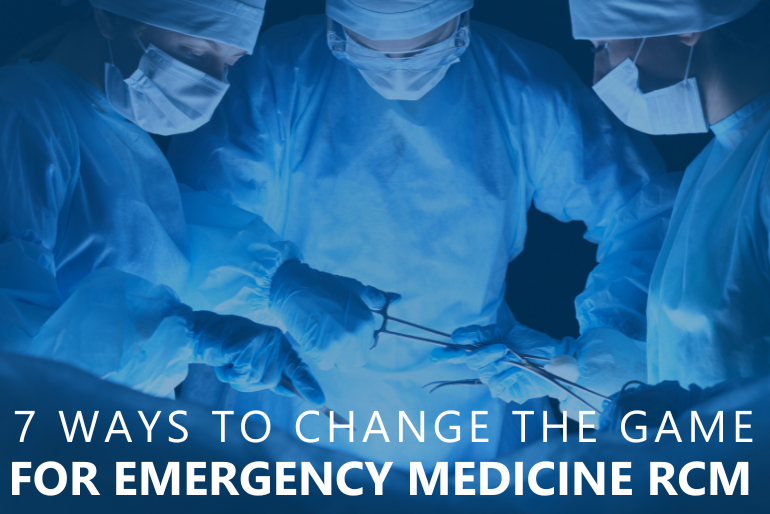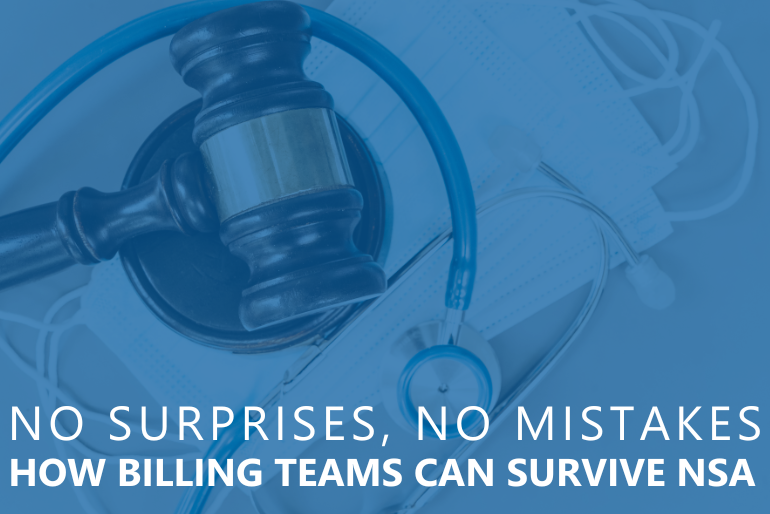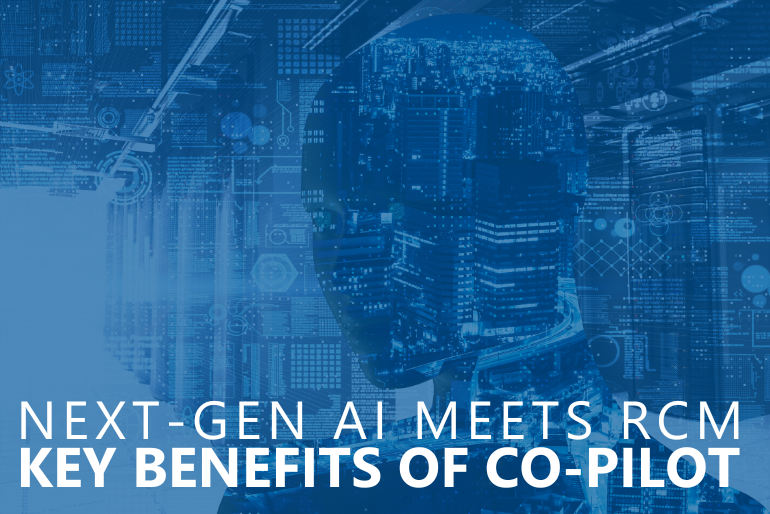Current healthcare industry challenges are driving leaders to streamline processes, saving staff members’ time and money. In the second installment of our recent three-part webinar series, ImagineSoftware’s Ben Buchanan and Kristin Wells offer an insightful discussion on the most important part of the medical billing workflow, the billing itself. This blog dives into automation technology fueling billing operations, the successful deployment of artificial intelligence in the field, and the influence of an EDI solution set on productivity – providing a comprehensive understanding of the seamless solutions available with ImagineSoftware.
Watch Now – Patient Engagement in Top Gear | How Empowering Patients is Accelerating Revenue
Automated Medical Billing
With an ever-evolving technological world, an automated billing solution is paramount for maintaining high-value, high-volume productivity, while reducing inaccuracies and bottlenecks in claims and payment processing. In particular, the latest ImagineOne™ platform empowers medical practices and billing teams with automation, artificial intelligence, integration, and a virtual assistant chatbot for smooth workflows and efficient, compliant reimbursement processes.
“Our aim is to automate workflow and simplify your life,” states ImagineSoftware’s Chief Marketing Officer, Ben Buchanan.
The importance of true integration within the revenue cycle management process is more important than ever, as healthcare organizations are striving to streamline processes and costs. While many software providers claim to use integrated systems, the reality often falls short. Attention to this element is crucial in client implementations and ongoing projects, especially as new tools and solutions are added. The aim is seamless operation of core billing processes for tangible impacts on both staff and patients. The power of integration extends to improving workflow simplicity, reducing screen toggling, and driving better communication between systems. When accurately executed, integration can inherently mimic automation’s benefits for streamlined workflows, enhancing information-sharing convenience and accelerating the collection and data acquisition processes.
The process of data acquisition and automation in the billing application entails four main areas: configurability, prioritization, automated review, and bulk actions. The importance of system customization, especially within the healthcare industry, cannot be overstated due to various unique factors such as geography, payer mix, and patient profiles. With Imagine’s criteria builder, one can set custom rules to handle recurring scenarios effectively, turning manual tasks into automated ones.
There’s an ongoing focus on workflow optimization and prioritization. The Pareto principle suggests that 20% of the work yields 80% of the results, emphasizing the need for laser-focused processes to ensure optimized utilization of resources. Tools such as ticklers within ImagineSoftware’s billing platform can assist with prioritizing follow-up. Automation of routine and consistent tasks through bulk actions and automated review processes can significantly enhance efficiency as well.
Using analytics for data-driven prioritization to ensure tasks that provide maximum value are identified and tackled effectively continues to be a challenge for many organizations. Imagine offers a variety of standard and advanced reporting tools tailored to provide insights to users based on their unique preferences. A recent enhancement includes providing consolidated data extracts for users who utilize tools like Power BI or Tableau, making data analytics even more straightforward.
In the realm of healthcare, artificial intelligence (AI) and machine learning are demonstrating their transformative potential by enhancing revenue cycle management processes. These technologies not only augment the capacity of human workers but also perform assessments and corrections in real time, while humans are engaged elsewhere. Notably, AI-enhanced medical coding is yielding impressive outcomes— increased accuracy, improved efficiency, and significant cost savings. These gains are attributed to AI’s ability to handle large volumes of data and the freedom it gives human coders to finesse the algorithms.
Moreover, AI’s predictive modeling is being leveraged for patient collections. By analyzing a patient’s diagnosis, insurance, outstanding payments, and past billing history, it’s possible to predict their ability to pay and customize their payment cycle, thus helping to meet patients where they are financially.
AI is also making strides in denial prediction and automation. In the pilot phase, these tools successfully identify potential denials, and in many instances, rectify them before they become issues. A multifaceted approach concentrates on data acquisition and mapping, coding, and payer exceptions and responses. This technology is poised to bring tremendous value to the healthcare RCM industry.
Read More – Articulating Artificial Intelligence in Healthcare
Software technologies continue to evolve relentlessly, spotlighting an ongoing need to educate users on new features. Imagine focuses on reducing user friction and cutting unnecessary clicks. The goal is to continue simplifying engagement within the system, allowing users to easily make recommendations or generate reports. Instead of navigating a complex report section, with ImagineOne, users can simply type their needs into a chat window, and the system will automatically generate the desired report. Imagine’s approach to automation doesn’t aim to simply automate the process, but to automate the workflow, making users’ lives easier.
“The system continues to work even when we don’t, amplifying output and processing power,” explains Buchanan.
EDI Solutions
ImagineSoftware provides comprehensive solutions for claims management, integrating seamlessly within the billing platform. This integration means users never have to leave the Imagine interface to check on the status of claims or to send files. Users can also perform eligibility checks, check claim status, and submit files multiple times throughout the day for efficient processing.
“The integration with Imagine support is complete, enabling efficient ticket logging and triage by our Imagine team,” explains ImagineSoftware’s Director of Client Success, Kristin Wells.
ImagineSoftware’s clearinghouse solution stands out with its proprietary scrubbing systems designed to identify and halt claims that payers might reject before they even reach the adjudication stage. This proactive approach saves time and effort, allowing users to focus on improving operations. Moreover, any errors or rejections that do slip through will be categorized and assigned to exceptions queues, where they can be attended to by specialized staff. This streamlined process eliminates confusion and maximizes efficiency.
Imagine also provides a solution for handling remittances, transforming paper 835 files into a digital format, ensuring all data is in one easily accessible place. The integration of claim status response messages into the billing system is a game-changer—facilitating the tracking of claims, particularly those that seem to have no response or get lost in the process. This feature has already been implemented for major payers like Aetna, Cigna, and United Healthcare, and work is in progress to extend it to all payers. With a single click, users can get real-time updates on the status of their claims.
In addition to claim tracking, Imagine also integrates real-time eligibility checking, which is as swift as it sounds—send a request and get a response in 5 to 10 seconds. For convenience, batch eligibility checks are also available, allowing users to verify patient eligibility for upcoming days in one go. The results are returned the next morning.
The Imagine system offers multiple points in the platform for eligibility and claim status checking, including charge central, fast review, claims exception, and account inquiry. This variety ensures a smooth and efficient billing process, minimizing rejections and increasing revenue.
BankingQ™ is a comprehensive solution offering benefits from automation of payment processing to reduction of financial fraud risks. The system’s integration and reconciliation features ensure financial clarity and efficiency. BankingQ™ imports bank transactions and provides reporting metrics, standardized reports, and useful accounting reports, all while integrating with existing billing systems. Q-Balance reconciles transactions and ensures everything equals out at the end of the month. It matches 835 files with bank records and releases payments after double reconciliation, ensuring completeness and accuracy. Another standout feature is Q-Parse, which splits Electronic Remittance Advice (ERAs) and is particularly useful for businesses handling billing with multiple systems. It can also convert paper format EOBs into 835 files, reducing manual work, and accommodates patient payments, facilitating automatic payment posting.
In summation, the integration of innovative software systems from the Imagine team, with their robust automation and workflow optimization features, significantly transforms the landscape of claims management and billing procedures. The system is easy to use, improving user engagement and reducing time spent on manual tasks. Imagine Software’s proactive approach to identifying potential claim rejections and its streamlined process for handling exceptions enhance operational efficiency. The ability of integrated applications to provide real-time eligibility checks and claim status updates, along with advanced remittance handling solutions, demonstrates continued technology advancement in the healthcare financial sector. Moreover, the integration of BankingQ™ brings about financial clarity and reduces fraud risks, providing additional value to users. Overall, these technology solutions serve as powerful tools that increase productivity, streamline workflows, and ultimately contribute to better healthcare outcomes.
Want more? Watch the other two features within this revenue cycle series here:
Fireside RCM Chats: Best Practices for Medical Billing Pre-Service and Prep
Fireside RCM Chats: Best Practices for Medical Billing Post-Service and Evaluation
Request a demo to learn more!



